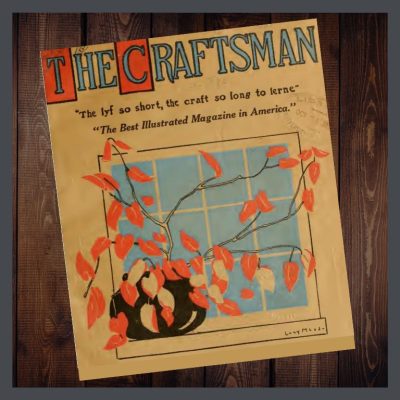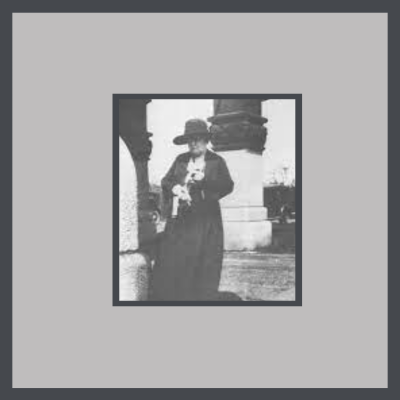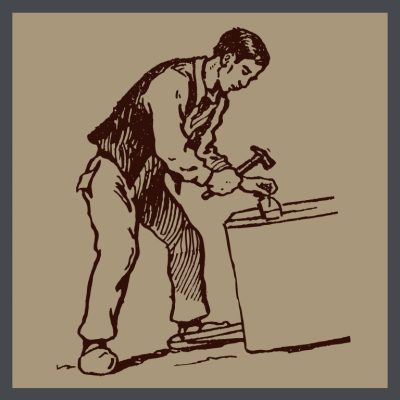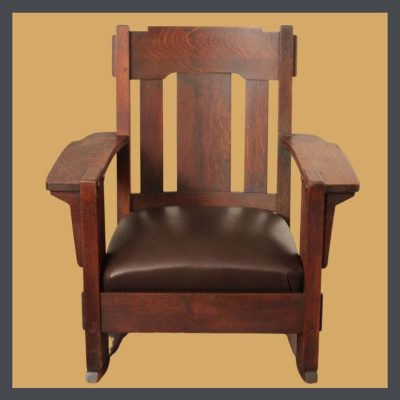INTERIOR DESIGN FOR THE CRAFTSMAN HOUSE
 Gustav Stickley brought Arts & Crafts to America from Europe in the early 1900’s. He carried with him both the aesthetic & the philosophy of the Movement, & then did it his way, inspired by the simplicity of the log cabin. He was considered to be the leading authority on architecture, gardens & interior design for the Craftsman house. Should you wish to learn more about Stickley, check out these videos that I have collected about him & his work.
Gustav Stickley brought Arts & Crafts to America from Europe in the early 1900’s. He carried with him both the aesthetic & the philosophy of the Movement, & then did it his way, inspired by the simplicity of the log cabin. He was considered to be the leading authority on architecture, gardens & interior design for the Craftsman house. Should you wish to learn more about Stickley, check out these videos that I have collected about him & his work.
In addition to making & selling furniture, he created a monthly magazine, The Craftsman, “An illustrated monthly magazine edited & published by Gustav Stickley in the interests of better art, better work & a better & more reasonable way of living.”
The magazine was a beautiful vehicle for spreading the word about the American Arts & Crafts Movement as well as promoting his furniture & his stores. It contains articles about the English founders of the Movement, John Ruskin & William Morris & was a key influence on the culture from 1901-1916 at which point it merged with another publication, Art World.
There is a wonderful article about the magazine & its contributions here. I strongly urge you to read it because it tells the full tale of how forward thinking, profound & inspiring Stickley’s beliefs & work really were. These lessons are applicable today, perhaps even more so than they were 100 years ago.
 Most folks think that the articles in The Craftsman were written by Stickley. Not so. He was a businessman with a large operation to oversee so he employed talented people to create his products & his P.R.
Most folks think that the articles in The Craftsman were written by Stickley. Not so. He was a businessman with a large operation to oversee so he employed talented people to create his products & his P.R.
When Stickley founded The Craftsman magazine in 1901, Irene Sargent, an art historian & Syracuse University Professor, wrote nearly all of the first 3 issues & thereafter wrote at least the publication’s lead article as well as serving as managing editor & designing layouts. Her writing & the images she chose, taught the public about the American Arts & Crafts Movement & also its predecessor in Europe & in America.
Between 1901 & 1905, Sargent wrote over 80 articles for The Craftsman, shaping the taste of America. The article below, on interior design for the Craftsman house, is stated as being “Editor’s Notes” in the table of contents for the issue. I am assuming that it was written by her, but it may have been written by Stickley himself. It’s a good introduction to the subject of interior design appropriate to our bungalows. In fact, the article was an introduction to the style for most Americans, being part of the first ever published magazine.
Enjoy!
AN ARGUMENT FOR SIMPLICITY IN HOUSEHOLD FURNISHINGS, by Irene Sargent
 In all that concerns household furnishings & decoration, present tendencies are toward a simplicity unknown in the past. The form of any object is made to express the structural idea directly, frankly, often almost ‘with baldness. The materials employed are chosen no longer solely for their intrinsic ‘value, but with a great consideration for their potential beauty. The qualities thus apprehended are traced to their source & then carefully developed by the skill of the craftsman.
In all that concerns household furnishings & decoration, present tendencies are toward a simplicity unknown in the past. The form of any object is made to express the structural idea directly, frankly, often almost ‘with baldness. The materials employed are chosen no longer solely for their intrinsic ‘value, but with a great consideration for their potential beauty. The qualities thus apprehended are traced to their source & then carefully developed by the skill of the craftsman.
In the eighteenth century, the French cabinet makers created charming objects suited to the palaces & castles of the old nobility. They reveled in richness of material: in woods brought from countries & colonies difficult of access; in costly gilding & other applied ornament; in fanciful painting which exquisite delicacy of handling alone saved from triviality & insignificance.
But to-day, with the idea of development everywhere dominant,—in the sciences, in educational methods, in all that furthers human intercourse, comfort & progress—we find the mood of the century impressed upon the material & necessary objects by which we are surrounded. Even our beds, tables & chairs, if planned & executed according to the newer & sounder ideas of household art, offer us a lesson taught by their form, substance & finish. We are no longer tortured by exaggerated lines the reasons for which are past divining. We have not to deal with falsifying veneers, or with disfiguring so-called ornament. We are not necessarily confronted by substances precious because of their traditional use, their rarity, &the difficulty attending their attainment.
 We are, first of all, met by plain shapes which not only declare, but emphasize their purpose. Our eyes rest on materials which, gathered from the forests, along the streams, & from other sources familiar to us, are, for that reason, interesting & eloquent. We may, in the arms of our reading-chair, or in the desk before which we pass our working-day, study the sinking undulations in the grain of oak, ash, elm, or other of our native woods, & in so doing, learn the worth of patient, well-directed & skilled labor; of that labor which educates; that is: leads out & develops the hidden Values & qualities of things too often neglected because they are frequently seen.
We are, first of all, met by plain shapes which not only declare, but emphasize their purpose. Our eyes rest on materials which, gathered from the forests, along the streams, & from other sources familiar to us, are, for that reason, interesting & eloquent. We may, in the arms of our reading-chair, or in the desk before which we pass our working-day, study the sinking undulations in the grain of oak, ash, elm, or other of our native woods, & in so doing, learn the worth of patient, well-directed & skilled labor; of that labor which educates; that is: leads out & develops the hidden Values & qualities of things too often neglected because they are frequently seen.
THE END
Stickley, the father of the America Arts & Crafts Movement, lovingly interpreted our country’s aesthetic in his newly invented medium of the time, the Craftsman style. Should you wish to know more about him, I heartily suggest that you watch the wonderful documentary, Gustav Stickley: American Craftsman.
TIP: Move right along onto Part 1 of this series on interior design for the Craftsman house.
 STAY IN THE BUNGALOW KNOW!!!
STAY IN THE BUNGALOW KNOW!!!
Sign up for our newsletter & receive our FREE E-book, 7 VITAL Things to Do Before You Hire a Contractor.



Good day, I own a 1973 split entry home and am considering making changes to the exterior to make it appear more along the craftsman style. Do you know of any photographic resources showing before and after photos of any homes that have been modified in this manner? Thanks
I am sorry, but I do not. If you would like to send me an image, or the address so that I can look at it on Zillow, I might be able to make a suggestion or 2.